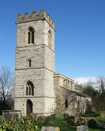For this church:    |
|
 Medieval rubble work Medieval rubble work |
A church at Cromwell is first recorded in Domesday Book (1086), though it can reasonably be assumed that a small church had existed since Anglo-Saxon times. Almost certainly built of wood, this appears to have been replaced towards the end of the 11th or beginning of the 12th century by a stone structure (a very common occurrence in Nottinghamshire at this period). During the Victorian restoration of St Giles, Cromwell, in 1873, a section of herring-bone masonry was discovered at the base of the north wall of the nave that probably formed part of this early building. This masonry was subsequently covered up by plaster and is no longer visible though externally the wall shows some rubble and uneven, broken courses.
By 1171 the parishioners of Cromwell owed 1s 10d annually to Southwell Minster for their Pentecostal offering. The first clearly identifiable Rector of Cromwell, Robert de Lisures, flourished in the mid 13th century, though ‘Thomas, dean of Cromwell’ is mentioned between c1210 and 1228. He may have been both an earlier rector as well as rural dean of Newark. Their successors down to the early 20th century were usually presented to the living by the lords of the manor of Cromwell, the first known instance being in 1276. For most of the period from then until the end of the Middle Ages the patrons were the Cromwell family. This descended from Healfdene, the main landholder in Cromwell at the time of Domesday. His last direct male descendant was Ralph, 3rd Lord Cromwell, Treasurer of England (1433-43) who died in 1456. Cromwell manor then passed to one of two joint-heiresses, his niece Lady Maud Willoughby.
Thereafter the advowson (right of presentation) was held by whoever held the manor until the seventh duke of Newcastle sold his estate at Cromwell in 1913, when the Society for the Maintenance of the Faith became the patron. Today the Society shares that right with the Bishop of Southwell and Nottingham and the patron of Ossington, Mrs Pamela Goedhuis. This is the result of the amalgamation of parishes to form larger benefices. In 1983 Cromwell was joined with Norwell and Ossington, and Caunton was added in 1990. Currently (autumn 2012) there are plans for a further re-organisation of the benefice which will probably result in the addition of two further parishes.
For much of the Middle Ages, information on Cromwell church is scant. The existence of a possible Anglo-Saxon cemetery attached to the church is hinted at by the survival of some very crude hogback monuments now forming part of the churchyard wall. However, most of the fabric now visible dates from the 13th century or later. It is from the time of Robert de Lisures onwards that a reasonably complete list of Rectors can be compiled, though there are a few obvious gaps, notably around 1400.
The medieval church offered a modest income to its priest. It was said to be worth £5 in 1299, 20 marks (£13 6s 8d) in 1343, only 10 marks (£6 13s 4d) in 1419, but had risen again to £10 by 1498. The Nonarum Inquisitiones of 1341 is more specific – the church of Cromwell was:
taxed at 20 marks, and the ninth of sheaves, lambs and their fleeces are worth 13 marks a year at true value and no more, and that the arable land and meadow there are worth 5 marks a year, and the tithe of hay with altar dues is worth 2 marks a year.
Some incumbents used it as a stepping stone to higher office. William de Hambleton, presented in 1276, later became chancellor and then Dean of York (1298-1307) and even, briefly, Chancellor of England (1305-7). Other rectors received permission to be absent from Cromwell, probably appointing a curate to perform services and other pastoral duties though none have been identified. William de Lameley, who was an acolyte (that is in minor orders) when he was presented to Cromwell in 1327, got permission in the following year to be absent for a year, a licence renewed for a further year in 1330 when he was ‘at the schools’. In 1336 as ‘William de Lameley alias Flintham’ he got another licence to go on pilgrimage as well as excusing him from sitting in synods, so his presence in Cromwell must have been sporadic at best. His successor, Thomas de Seyvill, MA, BD, one of the most academically qualified rectors of Cromwell in the Middle Ages, also had leave in 1344 to be absent for a year ‘at a university’. In his case it was Oxford, whose Chancellor and Masters had already petitioned in 1343 that Thomas be allowed to hold a canonry at Southwell as well as his rectorship at Cromwell. Among others holding university degrees, Robert Sudbury, instituted in 1466, was also a Bachelor of Divinity.
Less commendably, some rectors come to notice because of misdemeanours: William Kydewild was cited to appear before the Dean of Newark with others in 1303 and again in 1305 to answer ‘matters found against him at the recent visitation’. Ralph Attewater succeeded in 1349 after the deaths in quick succession of his two predecessors whilst still relatively young men (Thomas de Seyvill and William de Weston), probably an indication of the impact locally of the Black Death. He too got into trouble, was arrested and imprisoned briefly in Nottingham for stealing 48 geese from John Ede of Collingham in 1368. Perhaps these had been wandering in the meadows by the Trent and landed on the Cromwell side of the river. More constructively, in 1371 Ralph came to terms with the prebendary of Norwell Overhall (Richard de Chesterfield) and the vicars of Norwell (Thomas son of Henry and Adam Matson) in what had clearly been a long-lasting dispute over the apportionment of various tithes, offerings and other rights claimed by Chesterfield and the vicars. A lengthy document, drawn up with the assent of the Chapter of Southwell Minster, was eventually confirmed by Archbishop John Thoresby of York. This refers to at least 15 tenements in Cromwell and sets out conditions on which, in return for releasing their claims to the tithes, an annual pension of £1 6s 8d was to be paid in perpetuity to the prebendary, half to go towards the salary of the vicars of Norwell.
In October 1516 there was renewed discussion of this payment, which had lapsed for a period. Witnesses, several of them elderly like John Farrer, 80, William Ellet, 78 and Richard Grayffe, 60, were called to give testimony in St Giles about the pension. During the course of this they also provide useful detail on the incumbents of Cromwell they had known and other matters, such as the existence of an altar devoted to the Blessed Virgin Mary on the south side of the church, presumably relating to the chantry in the south chancel aisle about which little is otherwise known. According to the witnesses, no pension or augmentation had been paid in their lifetime; how the case was resolved is unclear from surviving evidence.
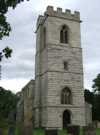 The church The churchfrom the west showing the tower |
As patrons of the living, the Cromwell family, in a tradition that would be revived later under the dukes of Newcastle, occasionally presented members of their own family to the living or drew on its resources to support them. Thomas, dean of Cromwell, may be the earliest example. Another early instance is Sir John de Cromwell’s request in 1304 that Ralph de Cromwell, a deacon and candidate for the priesthood, should get a rent of 4 marks (£2 13s 4d) from Cromwell and North Carlton (now Carlton-on-Trent). Sometimes the Cromwells advanced incumbents by having them transferred to other livings in their gift: Richard de Marnham, instituted to Cromwell in 1293, became Rector of Lambley in 1298, a position he held until 1323. The Cromwells were also generous when the building itself required repair, extension or decoration. A few fragments of surviving medieval armorial glass, displaying the arms of Vipont, now in a window on the north side of the chancel, celebrate the marriage of John de Cromwell to Idonea de Vipont which occurred in 1301. But the most obvious evidence at St Giles for the patron’s generosity is probably the rebuilt west tower, traditionally dated to c1427.
This was at the point when Ralph, 3rd Lord Cromwell, was just coming into full possession of his estates, after which he began an ambitious series of building campaigns in the manors he held to display his wealth and growing national authority. Locally, he also spent lavishly on Lambley church as his later armorial device of the treasurer’s bag on several butresses indicates, though his main achievements were the (re-)building of South Wingfield Manor, Derbyshire, Colleyweston Manor, Northants, and, most spectacularly, the Castle, Collegiate church and associated buildings at Tattershall, Lincolnshire, which can be closely documented from surviving accounts. Unfortunately no such accounts survive for the administration of his estates in the 1420s, though evidence shows him drawing a substantial profit of £39 10s 3d from Cromwell manor in 1430.
 The south side The south sideshowing the clerestory |
Disappointingly, however, although there were archidiaconal visits in 1409 and 1441, written evidence for the condition of the church and the activities of its congregation in the century leading up to the Reformation is largely missing, apart from allowing the succession of rectors to be followed and the mention of some burials within the church. The will of the Rector, Robert Gowsyll, in 1466 stated his wish to be buried ‘in the quire’, while a villager, Henry Grymesdyke also asked to be buried in the church in his will in 1477. The evidence from the present church - the three flat-headed, two-light windows on each side of the clerestory of around 1500 and the inscription ‘Saint Giles’ on the treble bell made by the Seliok family around 1520 - suggests that the church was flourishing during the early Tudor period.
It had by then achieved the form in which it has since largely survived. Hemingway (1976), whose history of the village provides an extremely well-documented account, largely followed here, describes it in some detail. Apart from the hidden herring-bone masonry, the oldest part is probably the Early English south doorway of the early 13th century. The nave arcade of three plain pointed arches adjoining the south aisle dates from the same period, as do two simple double lancet windows on the north side of the chancel, much of the walling of the chancel and south aisle likewise. The south chancel aisle, with its two arches, was probably added shortly after 1300, and may originally have been slightly longer than it is now; it would have served as a chantry chapel. At its eastern end there is a three-light window, which has twice been moved to new sites.
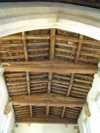 Timber roof Timber rooffrom c1500 still in situ |
At the Reformation, part of the chantry was demolished, and its stones used to block the two arches linking this aisle and the chancel, and this east window was repositioned in one of the bays. The blocked arches were uncovered when the church was restored in 1873. Around 1500 the nave was heightened by a clerestory with three windows inserted on each side, and a fine three-bay low pitched timber roof inserted, of which the eastern and central bays with Tudor Rose bosses are surviving originals.
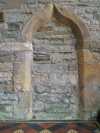 Outline of former Outline of formersacristy door |
A few other features are owed to medieval improvements: a ‘flamboyant’ window, with graceful tracery among the finest of its type in the county, was inserted in the south wall of the chancel, east of the south chancel aisle chapel, in the late 14th century (perhaps a Cromwell benefaction?). Large square stones around the window and in the east wall suggest that the whole east end of the chancel was then rebuilt and the east window enlarged to its present size, though the tracery is restored. In an unusual position, explained by the presence of the medieval rectory on the north side of the church, there is a priest’s door on that side of the chancel. To the east of this, a small ogee-headed doorway once gave access to a small sacristy, perhaps contemporary with the insertion of the larger windows. On the outside wall at this point there are the remains of an aumbry (stone cupboard) that served the sacristy of which the rest has long since been demolished. On the south chancel wall, under the 14th-century window, is a piscina. Just to the east of this is a niche, which may have held a cruet or a light.
 Early 18th century Early 18th centurygraffiti |
Finally, the tower is of three stages and built in large squared blocks of skerry. The lowest stage, with a pointed arch and west door with three-light window above, opens internally into the nave. The surround of the door to the stair-turret on the north side bears many graffiti, some dating back to the 17th century, possibly earlier. The second stage has a room with one small lancet window on the west. The belfry stage has a two-light window on every face and is battlemented. In the north-eastern corner the square stair-turret slightly projects on the north so that the northern belfry window is set considerably to the west of centre. There are no butresses. Inspection by Christopher Brooke of the bell-frame in 1981, confirmed by another by Taylors of Loughborough in 2011, revealed that it is probably an original timber-frame of the late 15th/early 16th century. The door to the ringing-chamber may also be original and that to the roof was described as ‘very old’, though that of the bell-chamber itself probably dates from the restoration. Access is now strictly restricted because of safety concerns.
From the Reformation to the Restoration of the Monarchy
After the death of Lady Maud Willoughby in 1497, the manor of Cromwell was divided between her two heirs, Sir William Knyvet and William FitzWilliam, who was a minor. Knyvet (d1515) presented Robert Walker to the living in 1507, and after Walker’s death in 1523, FitzWilliam presented John Hewisone. In 1537, by which time many important changes were in train nationally following Henry VIII’s break with Rome, the Knyvet share of the manor was acquired by William Holles. He was a wealthy wool merchant, member of the Staplers Company, and Lord Mayor of London in 1539-40, whose descendants would also eventually acquire the other half of the manor. However, initially he did not exercise clerical patronage: on the death of John Hewisone in 1539, it was Sir Henry (some sources say William) Saville, probably representing the FitzWilliam line, who presented John Holywell as Rector. He remained in post until Elizabeth I’s reign.
Very little evidence has been discovered for the history of Cromwell over these two tumultuous decades during which Henry VIII and Edward VI took the Anglican church into the Protestant camp, Mary took it back to Rome, and Elizabeth I finally restored Protestantism after 1558. However the indications are that Holywell remained largely Catholic in sympathy. He was certainly not a strong supporter of the new Queen, since he failed to appear to renounce the pope’s supremacy, was pronounced contumacious and deprived of his living. By 1564 he had been replaced by Thomas Thurland.
Rector of Gamston since 17 December 1537, Thurland also held Clayworth from 1554-9, which he may have resigned in order to take the rectorship of Cromwell. Clearly a man who, unlike Holywell, could accommodate his conscience to changing political circumstances, Thurland was later reported to have neglected Cromwell, not even appointing a curate to officiate in his absences. In the interim the parsonage house, on the north side of the church, was occupied by the Saville family. In his will of 5 January 1569, Henry Saville, esquire, bequeathed it to his wife, with remainder after her death, to their son, Francis.
Following Thurland’s death in 1575, two rectors held the living briefly, Reginald Harrope (1575-80) and Christopher Gregory (1581-3), who went on to become Archdeacon of the West Riding, dying in 1600. He was replaced by Hugh Osborne MA (1583-1623), whose sympathies lay more with the increasingly influential Puritan wing of the church. In 1589 he preached a sermon at the annual clergy synod at which he launched a fierce attack on the mercenary activities of the prebendaries of Southwell, for commuting penances and ‘taking money for the same, which they put in their own purses’. Calling them ‘Maisters of Sodome’, his remarks led to a summons to appear before Edwin Sandys, Archbishop of York, in the Court of High Commission on 19 May 1589, when he was ordered to withdraw his slanders. He apparently refused to do so, but was allowed to remain at Cromwell, where he exercised a conscientious ministry. In 1594, for example, he was ‘catechisinge of youth accordinge to the Queen’s injunctions’ when two villagers, John Wilkinson and Peter Tomlinson, ‘were dauncinge and keeping evill rule so neare the church in Cromwell aforesaid that they interrupted and troubled the minister’. He officiated regularly at Easter communion: in 1603 it was reported at the Archdeacon’s visitation that there were no fewer than 100 communicants, no recusants and no refusers in the parish.
In 1609 there was trouble with Richard Towell, alias Holmes, of Cromwell, an alehouse keeper, for harbouring Talbot the piper and others, allowing them ‘to swager, to bezell and drink all the time of evening prayer’, while Randall Morton had refused to come to learn his catechism and had joined those carousing in the alehouse along with several other named villagers. Similar raucous behaviour occurred on a number of other occasions that summer: on 20 August, piping and dancing had been going on all day, when George Towell was reported to have said in derision and contempt of God’s worship ‘hold you to the belstringess and we will hold to the piper’. Following this, Osborne wrote to Mr Purefey, a magistrate in Nottingham, entreating him to call these people into court and deal with them ‘for if such profane persons be not restrained by some punishment we shall have open profession of Athisme and all impietie’. In 1618, Randall Morton was again in trouble as ‘a common sleeper on Sabbath days in time of divine service and prayers’.
Beside the peccadilloes of his parishioners (after 1602 several were brought before the Archdeacon on charges of fornication, failing to take communion, sitting in the wrong seat, squabbling with each other, brawling in the churchyard – in 1628 Randall Morton’s wife and Jane Browne had a tussle there), Osborne had other issues to deal with, including maintenance of the church fabric. In the winter of 1612-13 two bells had fallen down because of a ‘great wind’, almost certainly a recently-made and still surviving bell by Henry Oldfield as well as the pre-Reformation ‘St Giles’ bell. But it was his successor Reginald Hubbald (1623-32), formerly master of Doncaster school and also a Puritan, who had to deal with the case of Katherine Browne, a widow, suspected of witchcraft, for whom a warrant of arrest was issued in 1629.
Her name had already appeared in other presentations to the Archdeacon. In 1624, for example, she had failed to take communion at Easter and defaulted on a payment for the clerk’s wages for which she was fined. Next year she was caught fighting with John Rawden’s wife. Clearly a troublesome neighbour and a widow (a classic profile for attracting accusations of witchcraft), this may have been revenge on the part of some villagers; unfortunately the outcome of the case has not yet been discovered.
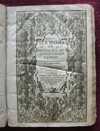 Book of Sermons Book of Sermonsreissued under King Charles I |
The tradition of independent priests at Cromwell in the early 17th century, was continued by William Williamson, MA Cantab (1632-5); he succeeded Hubbald but refused to pay a clerical subsidy. His successor, Henry Truman (1635-50) too was a man of firm opinions. Also an MA from Cambridge, he had been vicar of Walesby from 1624-43, but probably resigned that living following his appointment as vicar of Newark in 1642. At the time of the famous siege in 1645-6, Truman was one of the leading supporters of the royalist cause with a loan of £320, and he managed to hold onto this living until his death, aged 55, on 2 December 1655 as a memorial in St Mary Magdalene, Newark testifies. But his links with Cromwell had been severed by 1650, perhaps for doctrinal reasons, perhaps for political ones. In any event, he had largely been an absentee rector, employing a curate, John Haige. Ordered to set up a communion rail in 1637, according to the reforms which Archbishop Laud had championed, Haige had failed to do so a year later when the order was repeated. Was it Haige or a later incumbent who was responsible for acquiring Certaine Sermons or Homilies Appointed to be read in Churches in the time of the late Queen Elizabeth, of which a copy of the edition of 1635, certainly in the church by the early 18th century, is still in existence today?
Most of the parishioners seem to have accepted the changes which were occurring nationally without too much opposition. No recusants are known from this period. Parish registers were kept regularly from 1650, while two ‘ministers of Cromwell’, undoubtedly supporters of the Commonwealth, John Pepper, who was buried on 15 April 1652, and Henry Baron, whose first wife, Grace, was buried on 20 November 1654, and whose second marriage to Joan Popley occurred just over a year later on 24 November 1655, are mentioned in them. On 16 January 1656 yet another priest was instituted, Joseph Truman, not apparently related to Henry Truman but, following recent tradition, also MA Cantab. He had become vicar of Ruddington in 1654. A Greek and Hebrew scholar, he was also a man of firm presbyterian principles for whom the return of Charles II and the re-establishment of the Anglican church proved to be anathema.
The Long 18th Century and the Newcastle Connection
On 24 August 1662, Joseph Truman was presented at Newark Sessions for failing to use the Book of Common Prayer, remarking ‘there were lies in it’. For this he was deprived of his living. Retiring to Mansfield, he continued to preach in local conventicles, as at Burton Joyce, and published a work entitled The Great Propitiation (1669), before his sudden death on 19 July 1671 and burial at Sutton-on-Trent. His successors were much more conformist and by the 18th century the patronage of the dukes of Newcastle brought a number of moderately distinguished, if somewhat Trollopian, figures to Cromwell. Between 1789 and 1911 three distant members of the ducal family itself, a father, son and nephew, successively held the living.
Following Thomas Peabody (1662-9), who was installed in place of the deposed Truman, John Thwaites, BA Oxon, MA Cantab, was instituted on 22 September 1669. In 1676 he reported that there were 84 inhabitants old enough to take communion, and the parish was free of recusants and dissenters. He married Anne Birkhead, a widow, and they lived in ‘a mansion house containing four bays of [timber-frame] building with outshots, a barn three bays, a stable two bays of building, an orchard, garden and yard containing between 3 roods and an acre of ground’ according to the terrier of 1687. His wife died in 1695; and briefly from 1700 Thwaites was also Rector of Kirkby in Ashfield until his own death in September 1702, reviving a tradition of holding in plurality that would continue for most of the next 200 years.
His successor, Edward Raines, MA Cantab (1702-18), became Rector of Gamston in 1708 (probably because of Newcastle patronage), which several of his successors also enjoyed along with Cromwell. Around the time that Raines married Bridget, daughter of Thomas Bristowe of Beesthorpe, Caunton, the couple were able to move into what is now The Old Rectory where at least five children were born. The house had been built on the site of an earlier, possibly Tudor, manor around 1685 as a dower house by Gilbert Holles, 3rd earl of Clare, whose widow, Grace, died in 1702. It was her son, John, created duke of Newcastle in 1694, who handed it over for use as a Rectory, a function it served until 1920.
After Raines’s death, on 5 March 1718 Francis Charlton, DD, was instituted and he also had Gamston where he preferred to reside. Prebendary of Southwell from 1730, he died in 1734, having employed Hollis Pigot, Samuel Leeke and Lyn Caryl as his curates. The 1720s proved to be a decade of high mortality in Cromwell and surrounding villages, and the death of Pigot’s wife in childbirth and of two of their children are recorded in 1728-9. The other notable occurrence during Charlton’s period of office was the loss of the surviving medieval windows of the church as court proceedings on 19 March 1732 record:
Whereas it appears to this Court that Elizabeth Lillow of Cromwell, single woman, is a lunatick or mad Woman, and hath committed great disorders in the said Town of Cromwell, particularly in breaking the windows of the Church and Chancel there, and that she much terrified the inhabitants, it is therefore ordered that the Overseers confine her in a secure place, they being reimbursed their expenses by the parish.
Sister of Jonathan Liller (Lillow), basket-maker, Elizabeth was 30 years old at the time of the offence, and lived another 11 years before her own death and burial in the churchyard on 23 January 1743.
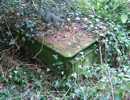 Monument to Monument toRobert Gunthorp in the churchyard |
The next rector, William Ashburnham, DD (1734-9), also held Gamston, employing Robert Gunthorp LLD as his curate. He resigned his living for that of Bexhill on Sea in Sussex, later becoming Dean and then Bishop of Chichester (1754-97). He was succeeded by another man of considerable intellectual qualities, John Henry Ott, MA, who had served as librarian at Lambeth Palace from 1718. Son of John Baptist Ott, Archdeacon of Zurich and a native Swiss, he also held Gamston, where he lived until his death at the relatively early age of 50 in September 1743, leaving Gunthorp in his curacy.
It was Gunthorp who made the returns to Archbishop Herring’s well-known visitation of 1743, recording that he lived in the parsonage house, received £30pa for his cure, paying £10 of that for rent, and also holding a curacy at Sutton-on-Trent for which he received a further £15. As for the parish of Cromwell, there were some 30 resident families, around 50 communicants, served 4 times a year, no dissenters, no meeting house (for Quakers), no school, no almshouse, nor any land left for charitable purposes! The new rector, Thomas Eastland, LLB, (1743-65) was also happy to employ Gunthorp but he died aged 37 in 1745, after which Eastland appears to have performed his duties in person since no curates’ names have been discovered until that of James Clay in 1765.
A terrier drawn up in 1764 gives a good description of the church at the end of Eastland’s ministry:
Concerning the Church, its furniture and goods: The steeple, which is parted from the Nave by a slight wall and a door, contains three bells now in use. The Nave or body of the Church, which is parted from the Chancel by an open frame or screen, contains a reading-desk and a pulpit and two rows of open seats with a box for alms, a table of prohibited marriages and a stone font at the entrance. There is a decent Communion Table, with rails before it, placed on an ascent at the east end of the Chancel, and a chest with locks and keys to it. There are of Vessels a small Paten and Chalice both of silver, a large pewter plate and Flaggon, and another plate for the offertory. Of vestments, a decent Surplice for the Minister, a linnin cloth to cover the Elements, a larger linnin cloth to cover the Table, a table-carpet of greet bays, a cushion and cloth of the same for the pulpit. Of Books, a great Bible of the last translation, a large Common Prayer Book, another of a smaller sort, the Book of Homilies, with one parchment Register and two of paper.
It is also noted that a parish clerk was appointed by the rector and paid £1 9s 11d a year. As Hemingway notes, ‘there is nothing to suggest that the “steeple” was ever loftier than the present flat-roofed tower’ and that ‘the “slight wall and door” between the nave and tower may have enclosed the base of the latter as a sacristy’.
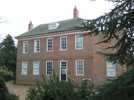 The Old Rectory The Old Rectoryat Cromwell |
Eastland’s successor, William Rastall, DD (1765-88), born in 1724, the only surviving son of Samuel and Ann Rastall of Newark, had been educated at Eton and Jesus College, Cambridge. After taking orders, he was presented to the Rectory of Waltham-on-the-Wolds, Leicestershire, by John, Duke of Rutland, a benefice he held until his death. In 1754 he married Mary, only daughter of Major Allgood of Branton, Northumberland, being named Prebendary of Normanton, Southwell Minster, in 1760. Unhappily, for much of his life he suffered from ill-health, compounded by incompetent treatment, so ‘was much too enfeebled to adopt the usual methods of rising in his profession’. This resulted in the use of many officiating ministers at Cromwell during his incumbency, when he was unable (as Hemingway notes) ‘sometimes for several months together, to carry out his duties in person, though no Curate seems to have been appointed’. Despite this, Rastall also became Master of St Leonard’s Hospital, Newark, and Vicar-General of Southwell. For most of the last fifteen years of his life, he lived in the Rectory at Cromwell, carrying out extensive refurbishment and enlargement between 1786-8. Throsby records in 1797 that it was by then ‘one of the best parsonage houses in the Midland parts of the kingdom’, and the living was worth £300pa. During this time, according to his son, the distinguished historian of Southwell, William Dickinson Rastall, ‘he discharged the duties of parish priest with exemplary punctuality, hospitality and decorum’.
Perhaps the most significant event affecting most parishioners during Rastall’s tenure was the enclosure of the parish completed in 1773, when some 1342 acres out of 1388 acres were enclosed, and the rector was awarded 240 acres in lieu of tithes. The administration of this glebe became a major pre-occupation of some of his successors. The next rector, Charles Fynes (1789-1827), for instance, has left notes on management of his farm land between 1792 and 1809, while a later one even took on many of the tasks of farming himself (see below).
With the appointment of Charles Fynes to succeed Rastall, the influence of the dukes of Newcastle over Cromwell becomes even more obvious. After Oriel College, Oxford, Fynes entered the ministry, deacon in 1770, priested in 1772, and becoming vicar of Newark in April 1776, where he married Emma, daughter of Job Brough, Attorney and Town Clerk. Named Prebendary of St Peter’s, Westminster, in April 1788, he was instituted Rector of Gamston on 28 December 1788 and then of Cromwell on 27 January 1789, thanks to Newcastle’s patronage. He was indeed related to the duke, who with his wife occasionally spent a few days at the Rectory. The connection with Gamston, probably already established because of his ties to Newcastle, predated his appointment to Cromwell, since three of his children were baptised there between 1781 and 1784, followed by three more at Cromwell between 1789-95.
However, from 1796 he ceased to reside in the Rectory, which was leased with furniture to Samuel Martin, curate, whose tenancy even included a clause about his use of manure from a dovecote that had existed since at least 1745. For the next thirty years Fynes employed curates, among others James Foottit (later school master at Southwell), Charles Guthrie, John Golland, and, in 1823-5, his own son, Charles John, who eventually succeeded him in 1828. In addition, other priests officiated at Cromwell, some of them on a fairly regular basis like the Rev Edmund Herring, curate of Norwell, whose signature occurs frequently at the start of two new registers which were begun in 1813, following an act of Parliament. One of them (Baptisms) was only completed in 1991, while the Burials register was still in use in 2012. A register of Banns of Marriage begun in 1823, when Charles John as curate usually signed, was completed in 1994. At the wedding of the rector’s daughter, Caroline Frances, to the Rev James Webber, BD, on 13 September 1813, the Archbishop of York (Edward Venables Vernon), officiated, at what must have been one of the grandest social occasions ever held in the church.
The Victorian Era
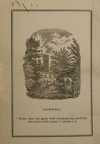 Engraving of Engraving ofthe church dated 1842 |
In 1821 Charles Fynes and his son, had adopted by deed-poll and royal licence the name Fynes-Clinton. On 26 January 1828 Charles John Fynes-Clinton was instituted to the living, following the death of his father in the previous November. In 1829 he married Rosabella Matthews, aged 19, and eleven of their children were baptised in Cromwell between 1831 and 1850 (a first son had been born in 1830). In 1924, Anna Craik, a grand-daughter, published Annals of our Ancestors, a very revealing account of family life in the Rectory in her grandfather’s time. It includes a delightful story of how Charles and his wife, after the coming of the railways, used to drive their heavy coach onto a truck, and remained sitting in it while taken to their destination. Charles also became vicar of Orston, Scarrington and Thoroton in Nottinghamshire, to all of which he appointed curates, having given up Strensall in Yorkshire. In 1842 he dedicated to the parishioners of Cromwell and Orston, a published collection of Twenty One Plain Doctrinal and Practical Sermons ‘to whom they were preached in substance’. Facing the title page, an engraving provides the earliest surviving view of the church.
Charles was a man of low churchmanship. His patron, Henry Pelham, 4th duke of Newcastle, was sadly disappointed in him as he told Gladstone in October 1832:
I have a relation near whom I appointed to a living, having first promised his father that I would do it if he were inclined to be diligent and conscientious, but desired him not to let the son know of it – however, when the father, who had been the incumbent, died, I presented the son supposing him to be attached to what are termed the orthodox principles of the Church of England. (Mr Fynes Clinton) By and bye I saw in a paper language purporting to have been used by him at a Bible Society meeting, when I could not believe my own eyes – and I wrote to him to say that language was there attributed to him such that I believed there must be some mistake in the name. He wrote back to me that there was no mistake – that he had used the language – that he used such language for the benefit of the Church of England itself – that by these means the people were drawn back from the meetinghouse to the Church – for that they would go to church when the clergyman preached evangelically but they would not when he did not preach evangelically – and indeed I think no wonder, for doubtless the people will be ready enough to come to church if you will preach for them there the doctrines which they hear in the meetinghouse ... I wrote back to Mr C to say I knew I could not help it now, but I was very sorry I had put him there.
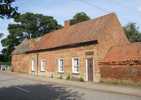 The school building The school building |
It was through the generosity of this rector that a school was established in the Rectory barn in 1848 that flourished until 1880, when despite protests, it was closed and the children transferred to North Muskham school. Part of the building now serves as the Village Hall. The rector’s signature appears for the last time in the Banns of Marriage register on 27 May 1849. From that point Fynes-Clinton left pastoral care at Cromwell to curates, briefly to Thomas Lucas, followed by Samuel Turner (1850-7), Edmund Haskins (1858-65) and John Smith (1860-71).
The last two, like the Rector himself, were certainly socially aware and especially active as preachers and on behalf of societies like the Church Missionary Society and British and Foreign Bible Society. On 14 December 1861, for instance, Haskins and the Rev James Maxfield, vicar of Norwell, preached in aid of distressed Cotton workers in Lancashire. In March 1863 it was Haskins who delivered an address in celebration of the wedding of the Prince of Wales and Princess Alexandra, and on 30 October 1864, he gave a sermon following the death of the 5th duke of Newcastle, when the church was decked out in mourning. If anything John Smith was even more energetic than Haskins, promoting public readings, work of the societies, organising village entertainments and keeping the Newark Advertiser abreast of events in the parish.
In 1850 the rector and his family had moved to Bedford and seldom returned to Cromwell. As curate, Samuel Turner made the return for the Religious census in 1851, reporting a total population of 190, Easter offerings of £1 8s, seating for 185 people, a morning congregation of 97, an evening one of 104, with 33 Sunday school scholars in the morning and 12 in the evening. In 1864, when his living was worth £420, Fynes, who was ‘savagely prejudiced against the Duke [of Newcastle] of that period on account of his High Church views, and would not allow his children to visit Clumber’ (Anna Craik), wisely stayed away from the duke’s funeral ceremonies. But after years of absence, both he and his wife were eventually buried in the family vault at Cromwell in quick succession in December 1871 (Rosabella) and January 1872 (Charles). Continuing the recent tradition of keeping it in the family, the new rector, Henry Fiennes-Clinton (1872-1912) was nephew of the last one, but High Church, a former chaplain to the duke of Newcastle and determined to make his mark in Cromwell.
Although the curates employed by the previous rector had been responsible for some modest improvements like the installation of a coal-burning stove and new churchyard gates in 1859, the serious repair of the church had been neglected over the long term. Much of it was now in a sorry state like neighbouring Caunton and Norwell. Two articles in the Newark Advertiser on 30 July and 17 September 1873, recalled that:
This fine old building had been allowed to fall into great decay and it was much disfigured. The place had the usual amount of unsightly boxes called pews, though on the north side a few old oak seats existed, yet these had decayed and were propped here and there with stones. The Chancel Arch had been destroyed, not a vestige remained. A large and inconvenient pulpit and desks blocked up the space where anciently the north pillar of the Chancel Arch stood. The Chancel was ceiled and whitewashed, the east window head entirely destroyed and walled up. The Chancel Aisle had been pulled down. A brick porch effectually concealed the fine South Door, and a huge gallery blocked up the Tower Arch.
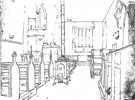 Sketch of the Sketch of theinterior, dated 1872 |
A small water-colour painted in 1872 (sadly no longer in existence) and a sketch show the chancel and part of the east end of the nave at this point.
In addition, when another new broom, the diocesan bishop, Christopher Wordsworth of Lincoln, visited in June 1871, he too found various things amiss, such as the small stone basin used as the font, which he ordered to be replaced. From the start, the new rector, who lived in the Rectory and carried out his duties personally, recognised a major restoration was required, galvanising the parish meeting to put the church in proper order. By 13 December 1872 a licence had been obtained from the bishop of Lincoln to hold services in the School Room whilst the repairs were completed. Work began in January 1873, with Henry Parr of Muskham as architect and Henry Clipsham of Norwell as builder.
Two important discoveries were made as work progressed: the herring-bone masonry at the base of the north wall, indicative of the earliest phase of the church building, and secondly, by demolishing a partition wall on the south side of the chancel, an arcade of two bays, dating to the end of the 13th or beginning of the 14th century was revealed between the chancel and the aisle which had once served as a chantry chapel. Some timber in the west bay of the nave roof was also replaced with plain chamfered pitch pine. Happily, the original timber of around 1500 in the eastern and central bays was preserved, but a few surviving ‘poppy-head’ oak benches that probably dated from the installation of the clerestory or soon afterwards, were swept away.
By July 1873 most of the work was finished, and on 24 July a service was held at which the new organ (built by Mr Cuthbert of Hull for £56) was played, and various items were presented such as a brass altar cross (by the Rev Samuel Reynolds Hole of Caunton), and an altar dish (by the Rev Seymour Bentley), while a font in memory of the rector’s only sister, Mary, wife of General Thomas Knox, RA, who died as the restoration was proceeding, was blessed to commemorate its completion. In the next few years further gifts were made of two large brass candlesticks and brass vases (1874), two stained glass windows (1875), and a brass altar desk (Easter 1878). A new Open Diapason Bass stop was added to the organ (1875) and in 1877 Taylors of Loughborough rehung the bells. The erection of new gates for the churchyard in 1882 rounded off the work.
Much of the information for the progress of the restoration comes from brief notes which Henry Fiennes-Clinton personally made that reflect not simply on church life but also on social, notably agrarian problems, in the parish. Indeed a summary of weather conditions and how crops fared forms the main content of most annual entries. 1881, for example, ‘began very wet and cold, but gradually improved and settled down into hot weather about Easter, vegetation backward. Then the hot weather began, rain ceased, and we suffered rather from drought. Very fine spring for clearing land and spring sowing.’ The next paragraph, which marks a significant appointment that shows the rector to be a man sympathetic towards women playing a more active role in church life than many in Victorian England accepted, laconically notes: ‘At the Easter Vestry, Widow Smith, Churchwarden for Rector, Mr T W Foottit for Parish’, before resuming, ‘The summer was hot, but cold and wet set in about harvest time. Much corn was spoilt, and very light crops. The winter was very mild, scarcely any ice or snow.’ In 1887 he noted a visit of the 7th duke of Newcastle to pass a night at the Rectory in February and the first visit of Bishop Ridding of Southwell to Cromwell to hold a Rural Deanery Chapter in his usual terse fashion, before waxing much more eloquent on the weather and crop prices, ending with the lament ‘altogether a terrible year for farmers. Eheu! When will the curse of Cobden be removed?’ revealing his own opinions with a final comment, ‘The political atmosphere better, a strong Conservative Government and the Irish kept under. Even Gladstone has stopped braying.’
A principal reason for the rector’s concern with the weather was that on 25 March 1880 (already in his mid 50s), ‘I entered upon that portion of the Glebe vacated by Mr Foottit’, since he could not find another tenant. He proceeded to farm the land personally for almost 20 years, before ill-health forced him to give up. To what extent he dirtied his own hands is not evident: presumably he employed labourers to do much of the manual work required, but there is no doubt that he took a very direct personal interest in his farm. At a dispersal sale in March 1899, he sold his stock of 11 horses, 28 beast, 108 sheep and 16 pigs, as well as various implements.
The death of his wife from influenza in March 1898 and his own increasing ill-health prompted him to employ a curate, his nephew, the Rev C W Knox, who also had practical talents. In 1888 a chancel screen made by the village blacksmith, to a design by Cecil Knox, and altar rails in an old Venetian pattern were installed. Ten years later, acetylene gas was put in for lighting the church shortly after Knox’s arrival as curate: ‘the whole work was carried out by Mr Knox, who understood plumber’s work’. As a memorial to his wife, in 1898 the rector also had the base of the medieval village cross in the churchyard refurbished. The restoration included the addition of a ‘bronze figure of the Crucifixion of Our Lord’ designed by Onslow Ford RA.
After 1900 the rector’s health seems to have improved enough for him to resume most duties without the help of a curate. In 1901 he notes not only the election of his daughter-in-law, Mrs Elizabeth Fiennes-Clinton, as his churchwarden, but that she was then elected as the first woman on the Diocesan Conference. The great social event of 1902 in Cromwell was the Coronation Feast. Despite the fact that the actual coronation planned for 26 June had to be postponed because of the king’s appendicitis, ‘as we had made provision for a great feast we had to hold it, so as not to waste provisions’. For 1903 the rector noted ‘nothing of any consequence in the Parish this year’ and there are no entries for 1904, 1905 or 1906, his notes ending in 1907 on a mournful note, ‘There has really been nothing particular to record since 1904, except that there were many deaths, 6 funerals about May 1907 ... The greatest loss we had was Churchwarden West. Almost every case, I think all but one, was cancer. There have been various movements, changes of cottages etc.’, before the annual weather summary, ‘The summer of ’07 was very hot and dry, the drought lasted for about 4 months, a very serious time for our dry, sandy land ...’, ending with mention of a winter thunder storm which had ‘blown down trees, though only one in the Rectory garden’.
From Edwardian England to the present
Henry Fiennes-Clinton died on 17 October 1911, aged 85, having served almost 40 years as Rector. One obituarist noted that he had been a fine shot and excellent cricketer. He was succeeded by Frederick Harvey (1912-18), formerly vicar of Egmanton (another Newcastle living), who was installed on 11 January 1912. Also a High churchman, starting a Register of Services on Easter Day (17 April 1912), he noted in it, ‘This is, apparently, the first Record kept of Services in the Parish Church’. He made the return for Bishop Hoskyns’ Visitation in 1912, noting 20 children on the Sunday School roll, but no baptisms or confirmations over the previous year. The service register shows that during Harvey’s ministry (which largely coincided with the Great War), major festivals were attended by 25-40 communicants, but that for ordinary Sunday Communions (termed Mass from May 1915) an average congregation was around 5, and during the week, when he celebrated a Holy Communion daily at 8.00am and an Evensong at 6.00pm, there was seldom more than one present. Four services were regularly held each Sunday (8.00am, 11.00am, 3.00pm and 6.30pm) and on some festivals like Whitsun as many as five (a 7.00am Mass being added to the usual times).
This register and a subsequent one provide only slight evidence on how World War I affected normal life. A note on 16 August 1914, a fortnight after it began, that the collection of £2 3s 2d at Holy Communion, with 6 communicants, was given to the National Relief Fund is the first indication, followed a month later when the collections on 20 September, totalling £1 12s 6d, were sent to Newark Hospital. A special day of intercession for peace was held on 3 January 1915, while a year later on 4 February 1916 moving Mass to 7.45am, a note explains that the ‘Hours of Service changed because of Zepplins (no lights)’. The Christmas collection of £1 12s 6d that year was also sent to Newark Hospital, but the register then remain silent until on 10 November 1918, it records that a Requiem Mass for those who had fallen in the war was held and, on 12 November, a Te Deum for the Armistice. Remarkably, Cromwell suffered no losses during the Great War (nor did it do so in World War II). It is thus one of 52 ‘thankful’ villages, which had no need of a war-memorial.
Other church minutes from this period show the Vestry Meeting going about its usual business. On 14 April 1914, for example, it decided to pay the sexton, M Selby, £5pa as well as £1 up to Easter for blowing the organ, and 1s thereafter for each Sunday he did this, while Miss E Swabey was to get £4 as church cleaner. By 1918 Selby’s wages had gone up to £6pa, but those of the cleaner (F Parkes) remained the same. In 1919 Selby resigned and Mrs Sampson replaced F Parkes at the same wage.
During Frederick Harvey’s ministry, a new vestry on the north side of the chancel was built in 1912-13. Between 21 and 25 October 1913 a ‘Tabernacle [was] being erected on Altar so no Services possible’, whilst repairs to the tower were partly paid for by a Garden fête held earlier on 18 June. Resigning, Harvey took his last service on 31 May 1918, to be succeeded by William Dolman (1918-56), the first rector to be named by new patrons, the Society for the Maintenance of the Faith. An Anglo-Catholic, usually referred to locally as Father Dolman and renowned for his personal generosity despite a modest income, he encountered some opposition for his churchmanship. There was certainly a decline in attendance, following the end of the War, though Dolman continued the tradition of two daily services. On 18 September 1929, a letter signed by ‘Evangelical Churchman’ appeared in the Newark Advertiser alleging ‘Mass is said in Latin at Cromwell’. This was refuted by T G Faulkner, who replied, ‘nonsense: the service is invariably in English’, though he should have added that Dolman was indeed using a translation of the Latin rite as many Anglo-Catholics did. Pencilled marginal notes in the Book of Homilies (1635) suggest that Dolman like some of his 19th century predecessors had continued to draw on this venerable work in their preaching!
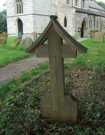 Monument to Monument toFr Dolman in the churchyard |
In 1920, Dolman decided to sell the Rectory, purchasing Mellor’s Farm at the south end of the village street for a new rectory. Though smaller than the previous one, it was still a substantial brick and slate building, with three sitting rooms, two kitchens, scullery, two pantries, lavatory and WC on the ground floor, and no fewer than eight bedrooms, bathroom and WC on the first floor. Following his retirement in 1956, after a long and conscientious ministry, the new parsonage was divided into two dwellings for diocesan use as homes for retired clergy, some of whom like the Rev A H Thomas frequently helped to officiate, before being sold more recently for private occupation. Father Dolman only enjoyed a brief retirement. He was buried in the churchyard, after his death on 28 October 1958, alongside his wife, Ethel, and daughter Mary, who had both predeceased him, their graves being marked at the time with wooden crosses, as was that of the Rev Mr Thomas.
He was succeeded by Hilary Acland Dunn (1957-60) as priest in charge, and then by William Harvey Snow, installed as rector on 16 February 1961, who also held the livings of North Muskham and South Muskham, until his retirement in 1978. The Service register from 1958-78 reveals a very different pattern from that before and during World War I. There was now only one Sunday service, alternating between a morning communion and an afternoon evensong, supplemented by another service in the week, also usually a communion or evensong, as a result of which in 1960 no fewer than 89 communion services were held in the year. This figure was reduced a little subsequently but until 1971 there were always at least 70 annually, though average attendance was usually less than 10. Attendances for major festivals were also declining slowly, perhaps most markedly for Whitsun, whilst those for Christmas fluctuated most widely, depending on whether it was a Midnight service on 24 December or a communion on Christmas day (the first attracting 40-60, whilst fewer than 20 normally attended the latter).
The opening of a new A1 bypass in 1966 brought some relief from traffic in the immediate vicinity of the church, which also benefited from the installation of electricity in 1968.
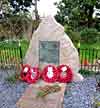 Cromwell Lock Cromwell LockMemorial |
A tragic event, the loss of 10 members of the 131 Independent Parachute Squadron, Royal Engineers (Volunteers), swept over Cromwell Lock on 25 September 1975 during the course of a night exercise, led to close contacts being established between the church, bereaved families and the Parachute Regiment Association, the Airborne Engineers Association, and former and serving members of 131 Commando and Parachute Squadron. An annual service of remembrance celebrated on a Sunday in September near the anniversary of the event is now one of the main events of the church’s year.
Following Mr Snow’s retirement in August 1978, Charles Kemp-Buck was priest in charge from 1978-82, when Billie James, vicar of Norwell (1983-9), was appointed to a joint-benefice which also included Ossington. During the vacancies that these changes caused, the Rev Richard Camenisch, a former vicar of Laxton who had retired to Cromwell in 1977, often acted as the officiating priest until 1997. Robert Whittaker (1990-5), Anthony Tucker (1995-2004) and Sheila Dixon (2005-11) have held the living in recent years. In common with other rural churches, the number of regular services has been much reduced from the days when Cromwell had its own rector and curates... curates. For a period the church was closed after Christmas until Easter. However, after a number of years with very small congregations and the burden of maintaining the church falling on very few shoulders, there has recently been a welcome increase in numbers with much evident enthusiasm for the church in the village. Currently a monthly service is held for this loyal following.


